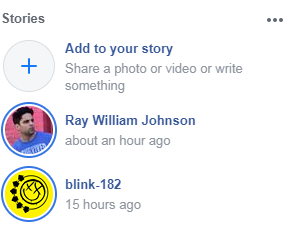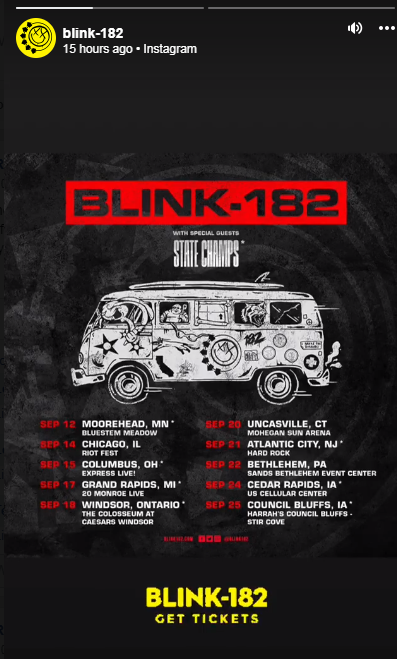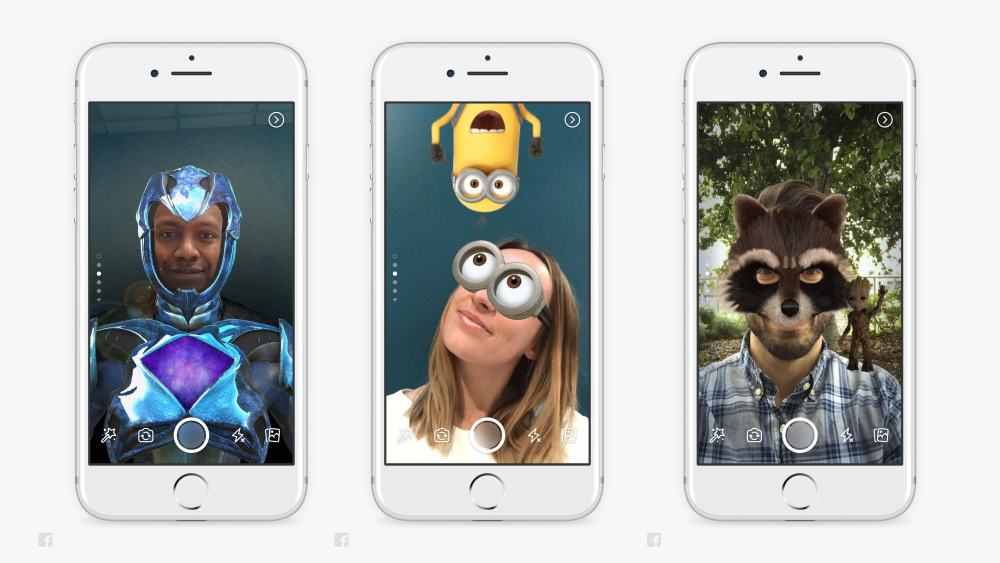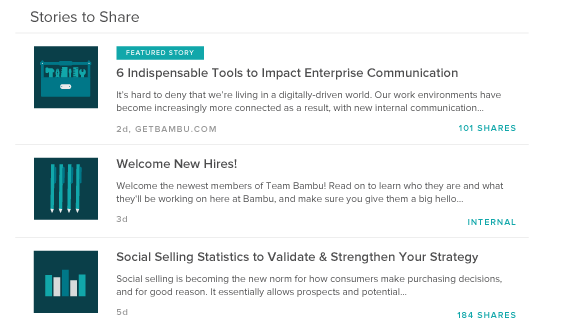Videos are perfect for social media.
They’re immersive, engaging and inherently social. The right video creates the intimacy of face-to-face interaction, without ever asking your audience to leave their sofa. It’s no wonder that social platforms around the world are investing in video.
Facebook Stories is just one of the latest ways to delight your customers with visual content.
These user-generated slideshows and video collections are short-term pieces of engaging content available for up to 24 hours. Facebook brought Stories to the market after the format achieved phenomenal success on Snapchat.
Facebook supports 2.23 billion monthly active users. That’s about three times the viewership of Snapchat. If you want your brand story to be a best-seller, you’ve got a better chance of finding your audience with Facebook. Just 14 months after launching, Facebook had 150 million active users per day for Stories.
The question is, how do brands take advantage of these new media moments?
How can you make your story a real page-turner?
How to Create Facebook Stories
Facebook Stories are made up of visual content in video or slideshow format. They’re created on your smartphone camera and last about 20 seconds. Stories are also inherently temporary. After 24 hours your story automatically deletes itself. However, there is an option to save your content into a private file for future insights.
Facebook stories come packed with text, filters and stickers. Adding the right elements to your story, from location-specific tags to unique images, boosts engagement. Facebook also allows you to see who has watched your story. That’s ideal when you need to enhance your targeting strategy. To create a story:
- Click the “Create Story” button on your Facebook smart phone app.
- Record a video by holding down the round button. Or create a slideshow by touching the button once.
- Edit by adding location tags, filters and stickers
- Share your story by touching the + icon in the middle of the screen or share with specific users on Messenger.
Your published stories appear on the “Stories Row.” This is a section at the top of your news feed which lists available content.

To add camera effects to your stories, simply swipe up or tap the effects icon. Facebook offers a selection of masks, frames and filters. Add targeted messages by selecting the text icon. If you’re feeling playful, hit the “doodle” icon to draw on your video.
For tech-savvy creators, there’s an AR studio available for Mac where you can create augmented reality experiences for your audiences.
Why Do Brands Use Facebook Stories?
As a marketing strategy, Facebook has a solid track record. Around 96% of advertising experts say that Facebook produces greater ROI than any other social network.
At the 2018 F8 conference hosted by Facebook, the social media platform revealed that Stories are one of their most popular services. In fact, the network predicts that Stories will be the most dominant form of social sharing by 2019.
So, what makes stories so valuable to marketing?
1. Prime Real Estate
Facebook Stories appear right at the top of the Facebook app.
They’re the first thing that your customers see when they log onto their profile. This means Stories are great for grabbing attention. The Stories section even follows your customers as they scroll through their news on a desktop too!
As anyone who’s ever dealt with an SEO strategy will know, having your content front and center is crucial for engagement.

2. Rising Stories Use
From Instagram to Snapchat, Stories are rising in popularity.
More people are switching to the Stories format to connect in an organic and immediate way. After all, what better way to show your personality than through an organic, raw video snapshot?
On Instagram, 250 million people use Stories every day. If you’re not exploring all of your options with video content, you’re missing out.
3. Better Connections
People don’t trust companies these days.
However, the genuine and authentic nature of video often cuts through audience cynicism.
Facebook Stories provides an organic way to connect with your customers. With Stories, brands demonstrate what makes them special in an easy-to-consume way. Show what’s going on behind the scenes of your business or introduce a member of staff. Let your audience get to know the people behind the company.
4. Measure your Campaigns Easily
Facebook is a great platform for both targeting and analytics.
You can see exactly who’s tuning into your Facebook stories. This means that targeting the most interested leads is easy.
Once you know who’s watching your stories, you can adapt your targeting efforts and watch your results grow. You can even supplement your Facebook Stories analytics with tools like Sprout Social, for a better insight into your entire social campaign.

How to Take Advantage of Facebook Stories
Facebook Stories are popular because they combine two essential modes of communication: video and storytelling.
Storytelling gives companies a way to build affinity and trust with their customers. On the other hand, video boosts engagement with easy-to-consume content. Today, companies and consumers upload more video content in a month than the major US TV networks could create in 30 years.
Facebook Stories are bite-sized pieces of content that establish connections with your company.
So, how do you make the most of them?
1. Create Exciting Time-Sensitive Content
One of the things that make Facebook Stories so compelling is the fact that they’re short-lived. Facebook Stories only exist for a maximum of 24 hours. Companies use them to take advantage of “FOMO” – the fear of missing out.
Your fans use social media to stay up-to-date with concepts they care about. Creating incredible time-sensitive content ensures that your customers will be hanging on every word. Use Stories to:
- Get personal: Let your customers see what goes on behind the scenes in your office.
- Announce: Share important updates and announcements for a limited time.
- Host competitions and giveaways: Reward engaged customers for paying attention.
- Show limited-time sales and discount codes

2. Be Unique
While Facebook and Instagram Stories are naturally connected, that doesn’t mean you should post the same things on each platform. Every channel has its own nuances to consider. For instance, Instagram is more interactive than Facebook.
Users expect to see fresh content on your Instagram page several times a day. On Facebook, posts happen less frequently.
Since some of your audience will follow you on both platforms, repeat content can get a little overwhelming. Think about the specific demographics of your Facebook audiences, and tailor your content to suit them.
3. Be Brand Focused
Facebook provides various filters and effects for your stories. These extras are available both when you’re creating your story and when you’re editing your broadcast on Facebook.
Adding live filters is as simple as tapping the “Effects” icon on the bottom left-hand corner of your smartphone screen. You can change the font, add stickers, and adjust other components too. Adding filters makes your content more engaging and interesting. It’s also a chance for you to build your brand image. For instance:
- Use filters relevant to your brand.
- Add themes specific to the promotions you’re currently running.
- Use colors and text styles consistent with your brand image

4. Deliver Unforgettable Experiences
Customer experience is one of the most important topics in today’s marketing world. Video is a great way to enhance experiences, and Facebook Stories lets you build even further on your experiential marketing strategy.
For instance, Facebook Stories are fantastic for extending the reach of events. Create image slideshows and videos leading up to an event. Alternatively, host miniature announcements from people involved with the upcoming experience.
Facebook Collaborative Stories also ensures that you can cover your story from every possible angle. With “collaborative” stories, you can connect your videos with slideshows and clips from other people in your social network. It’s a great way to enhance brand reach and improve your video content.

5. Focus on More Than Promotion
As with any good social media strategy, remember that there’s more to delighting your audience than delivering promotional posts and discount codes. While people want product and service-focused posts from your company, they also want a chance to get to know your team as people too.
Rather than concentrating exclusively on sales, look for ways to delight your audience through content that appeals to them. For instance:
- Celebrate business milestones and new announcements
- Give previews of new products and upcoming projects
- Share video clips of events you attend
- Share important tips related to your niche
- Snap selfies of your team.
6. Use Multiple Voices
Give your voice more range.
With tools like Collaborative Stories, you can give countless people within your brand their own voice.
Influencer marketing is a popular way to build credibility for your company. If you want your customers to trust and appreciate you more, try teaming up with people they already love. Ask influencers to share stories with you or add to your existing strategy.
Alternatively, give your team more of a social presence. 71% of marketers are using employee advocacy today with the help of tools like Bambu by Sprout Social. Give your business voice a more authentic tone with messages from your staff.

7. Track the Performance of Your Stories
Finally, make sure you know where your stories are having the biggest impact.
When you know what kind of people are viewing your content, you know who’s interested in your brand. Use Facebook to see the users that are tuning into your social tales, then build on your insights with a social media tool like Sprout Social.
Facebook Stories recently announced an upcoming “Archive” option similar to Instagram Stories. This new tool will give companies more opportunities to save clips privately when they expire. That means that you can go back, check out your performance and even re-share content to your news feed.
There’s no excuse for not optimizing at every opportunity.
The more targeted your stories are, the more effective they become.
Telling the Right Tales with Facebook
Video content is a powerful way to engage with your audience.
Unfortunately, a lot of companies refrain from creating videos because they think their posts have to be perfect, professionally-made and pristine.
The truth? Your customers prefer the more natural moments that features like Stories let you place on social media.
Facebook Stories gives brands an opportunity to share their journey with people in a raw and organic way. The time-sensitive and authentic nature of Facebook Stories mimic the everyday interactions and memorable moments often overlooked by the digital world.